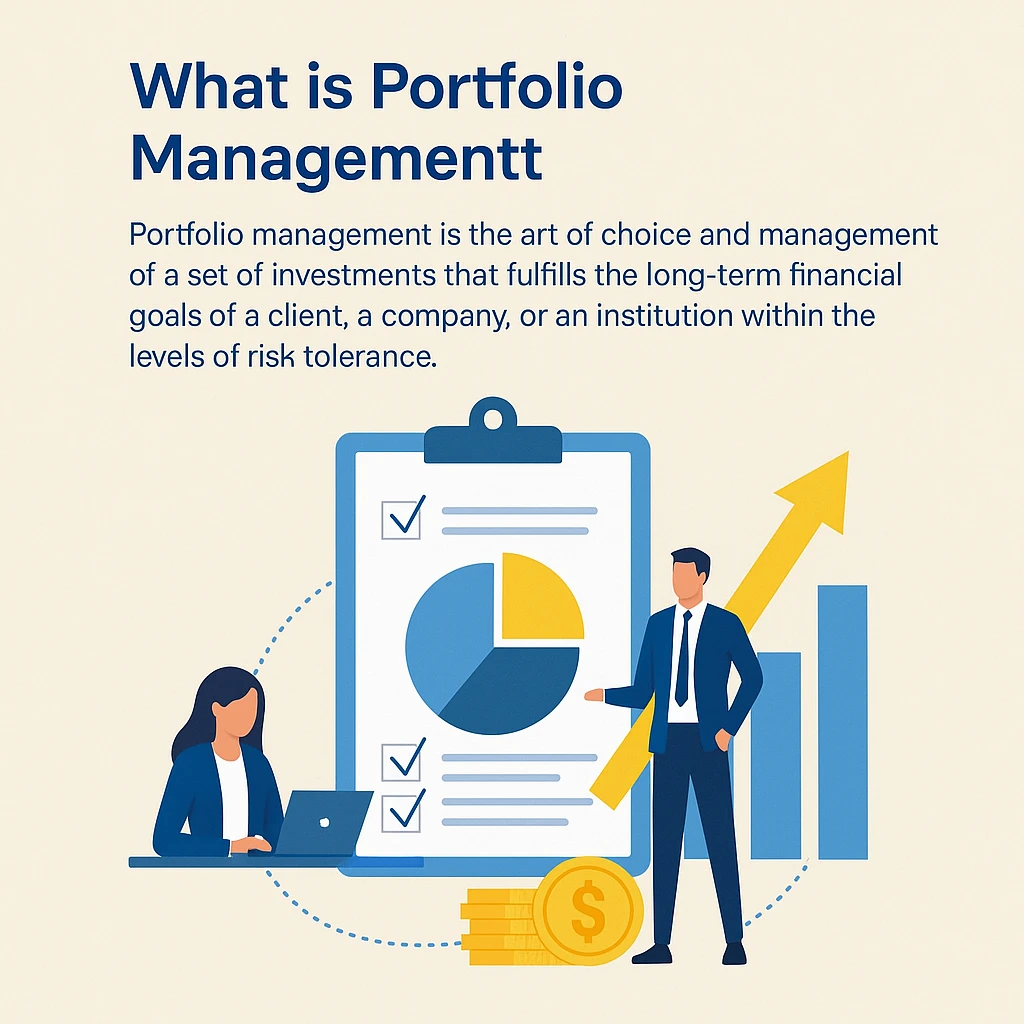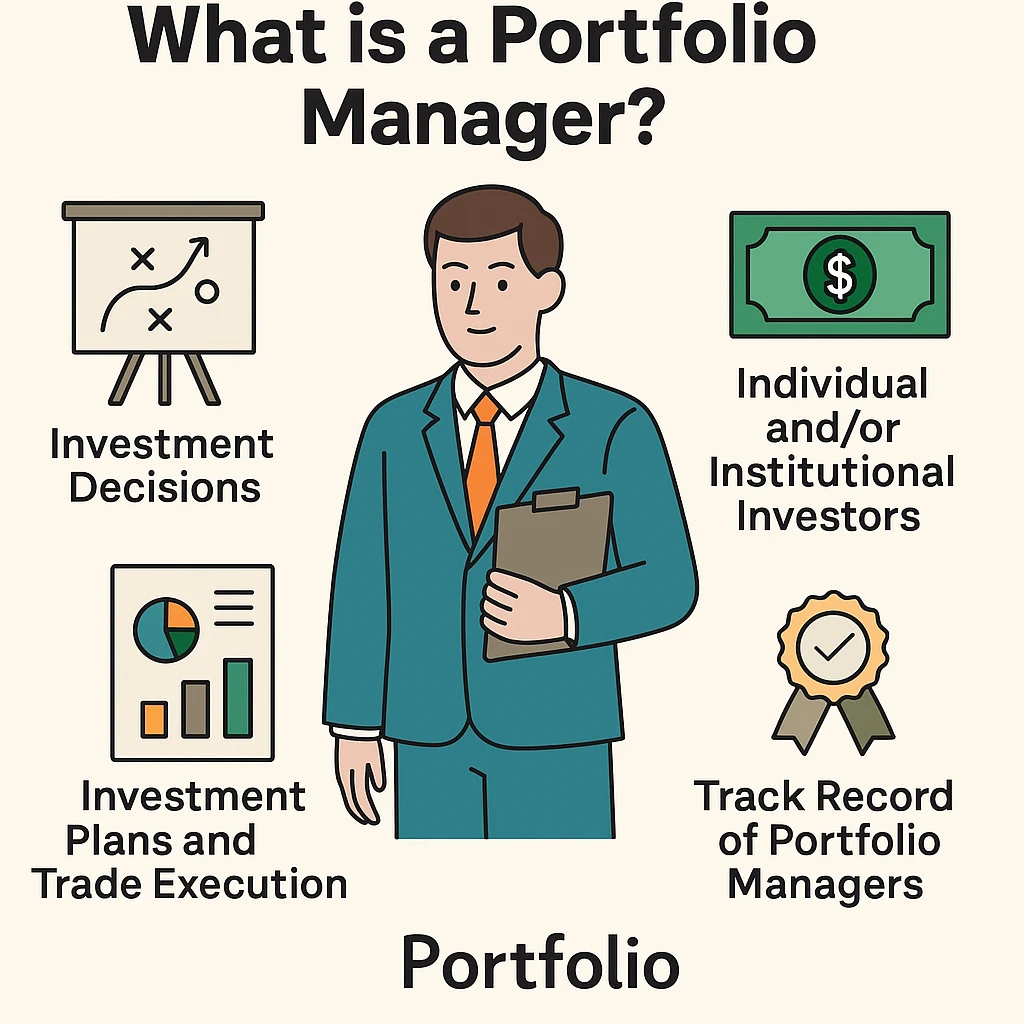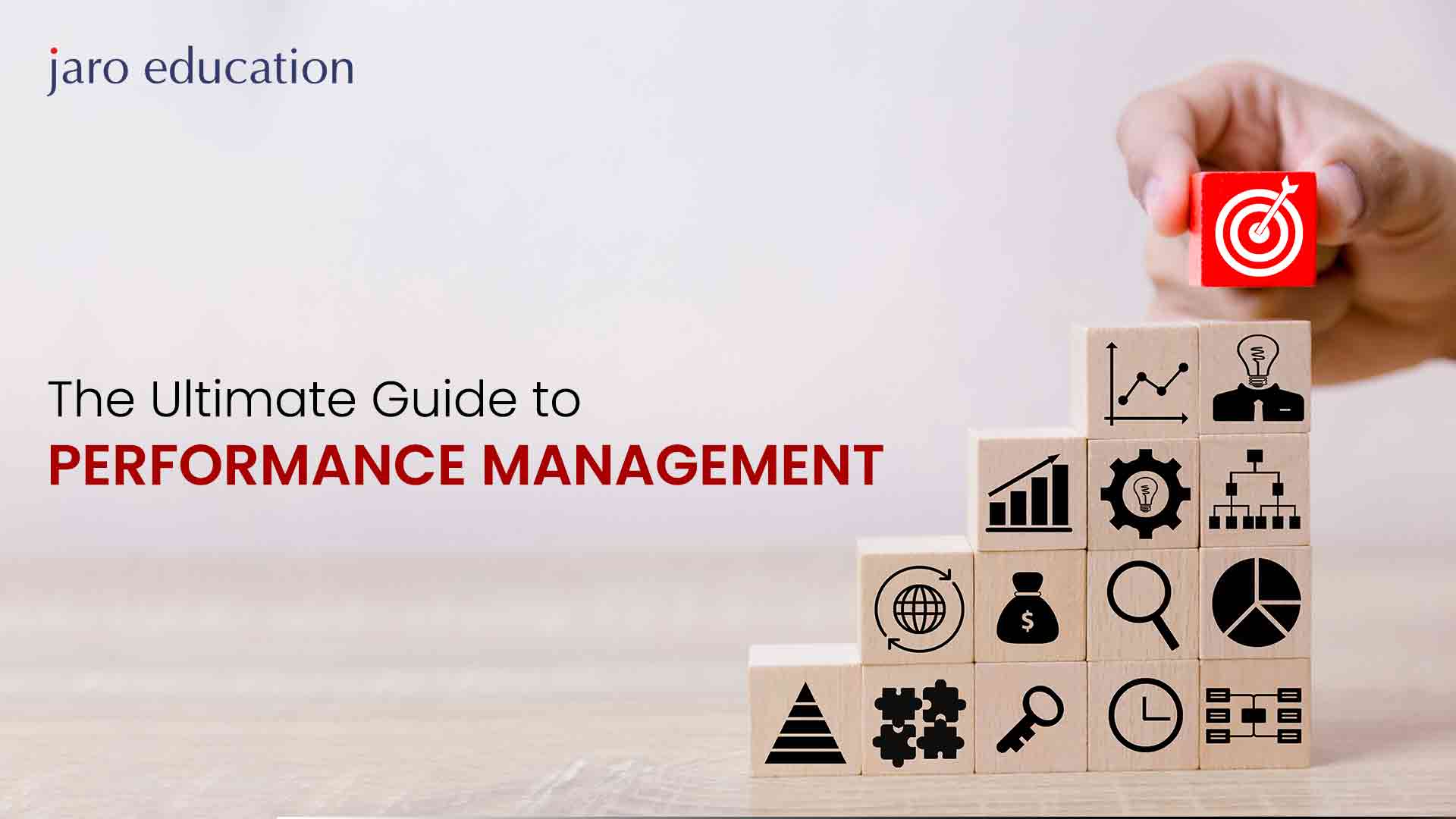Portfolio Management Explained: Strategies, Jobs, and Salaries in 2025
Table of Contents

- jaro Education
- 3, April 2024
- 2:00 pm
With the modern competitive, ever-changing global financial environment, achieving and sustaining wealth is only possible through a well-built investment portfolio. Portfolio management comes in there. Portfolio management can enable you to work smarter with your money; regardless of whether you are a regular individual investor or a high-net-worth client, portfolio management will help you use your money more efficiently across asset classes: stocks, bonds, mutual funds, and so on.
This blog post will define portfolio management, discuss the different portfolio management strategies, and emphasize its increased relevance in the field of financial planning. We will also have a closer consideration on what a portfolio manager is, their job duties, and how much they will be paid on average, in India.
So, it is time to plunge and see how professional portfolio management can make you smart about your investment choices.
What is Portfolio Management?
Portfolio Management is the art of selection and control of a collection of investments that complete the long-term financial needs of a client, company, or institution of and at the degree of risk tolerance is known as portfolio management.
Managing your portfolio is simply balancing between risk and performance: what is the right combination of assets to maximize the level of returns that you would want to take? In light of what risks are you willing to undertake?

Although most investors are likely to be doing their investment portfolio, a large-scale percentage of investors entrust their portfolios to managers. Whichever way, effective portfolio management also needs a thorough knowledge of the major components that go towards making investment successful, such as wise asset allocation, effective diversification, and sound rebalancing principles.
What is a Portfolio Manager?
The portfolio manager decides to invest on behalf of individual and /or institutional investors. Portfolio managers design and implement both investment strategies and the daily operation of buying and selling a portfolio. Such professionals can be charged with the management of assets of an individual investor or managed fund, e.g. mutual fund. When investing in funds, investors ought to rely on the track record of portfolio managers.

Importance of Portfolio Management in Financial Planning?
Notably, the value of portfolio management is anchored to wealth management and investment planning. Some of the highlighting characteristics of portfolio management that make it the ideal investment solution are as follows.
1. Investment Planning
Portfolio management will enable you to take your past financial investments into account instead of formulating your new ones. There is an informed choice to be taken by assessing the age factor, the probability of rising, the income, and the budget.
Such a holistic decision-making process will help to rule out the possibility of massive losses. This is because portfolio management is one of the fantastic alternatives in which one can invest as a beginner.
2. Risk Management
Risk Management refers to the procedures to recognize, estimate, and alleviate risks to capital and profits. Planning the portfolio well also leads to the elimination of risks. In this way, an investor has appreciated capital.
Risk management can be aided by monitoring and corrections on a regular basis. As an example, the investor who has a high-risk level can invest more in stocks, and one with a low risk level can invest more in bonds and other low-risk investments.
3. Tax Planning
As much as taxes tend to drain revenues, it is a major role of investment plans to guarantee low taxes on returns of customers. This is the other advantage of portfolio management. Through portfolio management, tax planning is made effective; that is, you can plan your investments in a tax-efficient way.
4. Diversification
Among some of the outstanding advantages associated with portfolio management is diversification. It enables you to spread your investment in various asset classes, sectors, and regions. This makes sure that the other portion of the portfolio is not affected if a particular investment plunges. It protects your portfolio against most of the impacts of market changes.
What Are the Different Types of Portfolio Management?
Portfolio management involves managing assets to achieve specific investment goals. These are of different types, which include:
- Active Portfolio Management
Some investors actively buy and sell assets to outperform the market. Active portfolio management requires thorough research and in-depth analysis. To achieve higher returns, professionals tend to make tactical investment decisions.
- Passive Portfolio Management
Unlike active portfolio management, investors create a diversified portfolio targeting a specific market index. Passive Portfolio management requires less frequent trading and lower management fees.
- Strategic Portfolio Management
As the name suggests, it focuses on the long-term objectives of portfolio management. The approach devised goes parallel with investments and overall financial goals. Investors need periodic reviews and adjustments based on changes in economic circumstances.
- Tactical Portfolio Management
Investors adjust their portfolios based on short-to-medium-term market conditions. Their main aim is to capitalize on market opportunities while managing risk.
- Dynamic Portfolio Management
Investors combine active and passive management elements, where they adjust investments according to changes in market conditions. These conditions can be economic factors that help in optimizing returns.
- Risk Parity Portfolio Management
In risk parity management, investors distribute investments across different assets. They classify their investment to balance the risk contribution from each asset. It’s quite a different approach in contrast to the traditional one, which involves equalizing the monetary value of investments.
- Behavioral Portfolio Management
The name of this approach defines the features of portfolio management differently. It focuses on the understanding of investor behavior and psychological factors.
- Socially Responsible Portfolio Management
The approach in this type of management focuses on financial returns and the positive impact on society and the environment. Investors following this approach aim to follow ethical and sustainable principles.
- Quantitative Portfolio Management
The scope of portfolio management relies on mathematical models and statistical techniques to reach investment decisions. The entire management uses algorithms to analyze market data and identify potential opportunities.
Investors may come across different portfolio management features depending on the approach type. After understanding the management types, the next move is to understand and build insights to rule the market.
Portfolio Management Strategies That Work
An intelligent portfolio is like a carefully created puzzle, with each piece playing an important role. There are different strategies you must stay aware of to achieve investment success.
1. Strategy 1: Diversification (Don’t Put All Eggs in One Basket)
Diversification involves spreading investments across different assets to reduce risk. Investors can avoid the risks of poor performance in a single investment by balancing it with others that may perform better. This approach focuses on achieving a stable and consistent return in the long run. Investors can better understand the correlation between various assets through diversification.
2. Strategy 2. Asset Allocation ( Balance is Everything )
Through asset allocation, investors can combine investments across different asset classes, such as stocks, bonds, and cash. It helps them manage risk by spreading exposure to various market conditions. Professionals can enhance their returns while minimizing the impact of poor-performing assets.
3. Strategy 3. Risk Management
Risk management helps investors minimize potential losses down the road. By diversifying investments, the risks associated with specific assets can be spread out. This strategy helps protect the portfolio from adverse impacts.
4. Strategy 4. Rebalancing ( Tune Up Your Portfolio )
It is a critical strategy rebalancing that involves periodically adjusting the asset allocation to maintain the desired risk-return profile. Investors sell the overperforming assets and buy the underperforming ones. This ensures the portfolio returns are optimized while managing risk over the long term.
5. Strategy 5. Growth vs. Income Strategy ( Choose What You Need )
Growth Strategy focuses on increasing the value of your investments over time (like tech stocks).
Income Strategy focuses on generating regular cash (like dividends or interest from bonds).
Why it works:
It aligns your portfolio with your life stage. A young investor may go for growth; someone close to retirement may prefer income.
6. Strategy 6. Monitoring Economic Indicators
Monitoring economic indicators is crucial for portfolio management as it provides insights into the economy’s overall health. Investors can stay aware of the factors like GDP growth, inflation rates, and unemployment levels.
These indicators can signal potential market trends, helping investors adjust their portfolios to mitigate risks and capitalize on opportunities. Additionally, understanding economic conditions enables investors to anticipate changes in interest rates and inflation, guiding strategic asset allocation within their portfolios.
7. Strategy 7. Timing of the Market
Market timing, the strategy of predicting the future movements of the financial markets, is generally considered risky and challenging. It’s not commonly viewed as one of the best strategies for portfolio management. Investors often need help to consistently time the market accurately due to its unpredictable nature.
A more widely accepted approach is to focus on a diversified, long-term investment strategy rather than attempting to time short-term market fluctuations. This approach aims to reduce risk and enhance the potential for sustainable returns over time.
Portfolio Manager: Role, Salary & Career Opportunities
A Portfolio Manager is a financial practitioner dealing with investment portfolios, representing people, organizations, as well as funds. They are the ones who decide on investment in assets, purchase or sell securities, and uphold a risk-reward balance, depending on what the investor wants to achieve.
They are mostly employed in portfolio management services (PMS) and mutual fund houses and frequently work with banks, investment firms, and insurance firms.
1. What Does Portfolio Manager Do?
The work of a Portfolio Manager is financial analysis, market research, strategic planning, and client relationship management. This is the breakdown:
| Responsibility | Description |
| Asset Allocation | Distributing investments across stocks, bonds, real estate, etc |
| Risk Management | Minimizing potential losses through diversification and strategy |
| Investment Analysis | Studying market trends, company reports, and financial indicators |
| Client Consultation | Understanding financial goals and suggesting personalized investment plans |
| Performance Review | Tracking and adjusting the portfolio based on market conditions |
2. Portfolio Manager Salary in India (2025)
In the determination of the salary of a portfolio manager, it all depends on the experience, talents, location, and the kind of employer. More professionals are able to earn a lot more by working in high-net-worth firms or other international asset management companies.
| Experience Level | Average Salary (Per Annum) | Top Employers |
| Entry-Level (0–2 years) | ₹4 – ₹6 LPA | Banks, Mutual Fund Firms, FinTech Startups |
| Mid-Level (3–6 years) | ₹8 – ₹14 LPA | ICICI Prudential, Kotak AMC, Groww |
| Senior-Level (7+ years) | ₹20 – ₹50+ LPA | Morgan Stanley, BlackRock, Axis PMS |
Source: Glassdoor
3. Portfolio Manager Jobs: Top Sectors
Where do portfolio managers work?
- Asset Management Companies (AMCs)
- Banks and Financial Institutions
- Hedge Funds and Mutual Funds
- Insurance Companies
- Family Offices and Wealth Management Firms
- FinTech Platforms and Robo-Advisory Firms
How to Build & Manage a Portfolio?
Get the best course to get the skills for portfolio management from IIM Indore: Young Leadership Programme.
Program Overview:
In today’s dynamic economic landscape, identifying, engaging, and nurturing top talent is more critical than ever to ensure success in high-performing, business-critical roles. Organizations are in constant pursuit of leaders who can navigate complexity, drive innovation, and deliver sustainable impact. The Young Leadership Programme from IIM Indore is a cornerstone for shaping the change-makers of tomorrow, equipping them to excel in these pivotal roles. This transformative programme is meticulously designed to cultivate high-potential professionals, empowering them to step into strategic leadership roles with confidence, capability, and clarity. Through a rigorous curriculum blending academic excellence with real-world insights, participants will gain a deep understanding of core business functions, strategic decision-making, and leadership agility.
Program Highlights:
Executive Education Alumni status – IIM Indore
Certificate of Completion from IIM Indore
2 Campus Immersion of 5 Days (Mumbai: Non-residential & Indore: Residential)
Comprehensive Pedagogy
Live sessions by IIM Indore’s faculty
Networking Opportunities
Why Jaro Education is the Go-To Career Guidance Platform in India
Jaro Education has emerged as one of India’s most trusted platforms for career guidance by offering industry-relevant programs, expert mentorship, and personalized counseling. It partners with top-tier institutions to deliver executive education and upskilling opportunities tailored to both students and working professionals. What sets Jaro apart is its commitment to not just education, but holistic career development—helping learners choose the right path, acquire in-demand skills, and unlock better job opportunities. With a strong focus on future-ready careers, Jaro Education stands as the go-to destination for anyone looking to grow personally and professionally in today’s competitive world.
Common Stocks and Portfolio Diversification
- Lack of Diversification
One common mistake is overconcentration in a few assets or sectors. Diversification helps spread risk, reducing the impact of poor performance in a single investment.
- Ignoring Risk Tolerance
Please align the portfolio with the investor’s risk tolerance to avoid uncomfortable situations during market fluctuations. Balancing risk and return based on individual preferences and financial goals is crucial.
- Market Timing
Trying to predict short-term market movements often results in poor decisions. Investors should focus on a long-term strategy rather than attempting to time the market, which is notoriously challenging.
- High Trading Frequency
Excessive trading can increase transaction costs and taxes, eroding overall returns. A well-thought-out, disciplined approach typically outperforms frequent trading.
- Neglecting Regular Rebalancing
Portfolios should be periodically rebalanced to maintain the desired asset allocation. Ignoring this can make portfolios skewed over time, deviating from the intended risk-return profile.
- Chasing Performance
Investors may be tempted to chase recent top-performing assets. However, past performance is not always indicative of future results. Considering a broader range of factors is crucial when making investment decisions.
- Overlooking Fees
High fees can significantly impact overall returns. Investors should be mindful of transaction costs, management fees, and other expenses associated with their investments.
- Failure to Continuously Monitor
Portfolio management is an ongoing process. Failing to monitor economic conditions, market trends, and changes in personal circumstances can lead to suboptimal decision-making.
- Emotional Decision-Making
Allowing emotions like fear or greed to drive investment decisions can result in impulsive actions not aligned with long-term goals.
- Not Having a Clear Investment Plan
A well-defined investment plan outlining goals, risk tolerance, and time horizon is essential. With a clear roadmap, investors may avoid ad-hoc decisions that align with their financial objectives.
Conclusion
The benefits of portfolio management are countless if you follow the right and fair strategies. The insights require you to involve key findings, emphasizing the significance of diversification, risk management, and strategic decision-making in optimizing investment portfolios. It underscores the importance of staying aware of market changes and taking the necessary steps to achieve long-term financial goals.
Frequently Asked Questions
Portfolio management is the process of selecting, organizing, and overseeing a collection of financial investments—like stocks, bonds, mutual funds, and other assets—to meet specific financial goals. It involves balancing risk and return based on an investor’s preferences and time horizon.
Portfolio management helps investors manage risk, achieve financial goals, diversify investments, and improve long-term returns. It ensures your money is working efficiently in line with your financial plan.
The main types include:
Active Portfolio Management
Passive Portfolio Management
Discretionary Portfolio Management
Non-Discretionary Portfolio Management
Each type caters to different investor needs and involvement levels.
Common strategies include:
Growth Strategy
Value Investing Strategy
Income Strategy
Balanced Strategy
Each strategy is tailored to specific goals and risk tolerance.
Begin by:
Setting financial goals
Assessing your risk tolerance
Diversifying your investments
Monitoring and rebalancing your portfolio regularly
Using portfolio management apps or consulting with a professional can help.
Yes, beginners can manage their portfolios using tools like Groww, Zerodha Coin, and ET Money. However, it’s advisable to start with research, take courses, or consult a certified advisor to avoid costly mistakes.
A portfolio manager directly handles and makes decisions about your investment portfolio, while an investment advisor provides suggestions and financial advice, leaving the final decisions to you.
PMS refers to professional investment management services offered to high-net-worth individuals (HNIs). It involves custom portfolio planning, execution, and monitoring by experienced portfolio managers
Risks include market volatility, poor asset allocation, over-diversification, and emotional decision-making. Good portfolio management aims to mitigate these risks through planning and strategy.
Ideally, review your portfolio every 3 to 6 months or whenever a major financial event occurs in your life (e.g., job change, buying a house, retirement planning).










